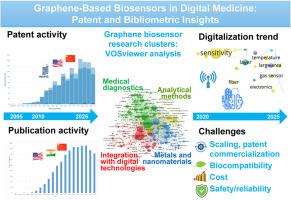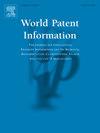Patent and bibliometric analysis of the scientific landscape of the use of graphene-based biosensors and their prospects in digital medicine
IF 1.9
Q2 INFORMATION SCIENCE & LIBRARY SCIENCE
引用次数: 0
Abstract
This article presents a patent and bibliometric analysis of the scientific landscape of the use of graphene-based biosensors and their prospects in the field of digital medicine.
A study of patent activity in the field of graphene biosensors (2005–2025) showed an increase in interest, especially since 2015, with a peak in 2021, with China, the U.S., and the World Intellectual Property Organization as the most active offices. Web of Science revealed 16,551 articles, with active growth since 2010, focusing primarily on analytical chemistry, nanotechnology, and electrochemistry. China and India lead the way in research.
Bibliometric analysis using VOSviewer identified four key clusters reflecting the main research directions of graphene biosensors: medical diagnostics, integration with digital technologies, the use of metals and nanomaterials, and analytical methods in biosensor technologies. The distribution of keywords over time analyzed with VOSviewer and CiteSpace indicates increasing digitalization in graphene biosensor research from 2020, underscoring the growing interest in flexible, highly sensitive sensors and their integration with digital platforms for diagnosis and analysis.
Despite the high potential of graphene biosensors, there are challenges pointed out in the literature, such as scaling, biocompatibility, and cost issues, as well as the need to address safety and reliability concerns.

基于石墨烯的生物传感器的专利和文献计量学分析及其在数字医学中的前景
本文介绍了使用石墨烯为基础的生物传感器的科学景观及其在数字医学领域的前景的专利和文献计量学分析。一项关于石墨烯生物传感器领域(2005-2025年)专利活动的研究显示,人们对该领域的兴趣有所增加,尤其是自2015年以来,2021年达到高峰,中国、美国和世界知识产权组织是最活跃的专利局。Web of Science公布了16,551篇文章,自2010年以来一直在积极增长,主要集中在分析化学、纳米技术和电化学方面。中国和印度在研究方面处于领先地位。使用VOSviewer进行文献计量分析,确定了反映石墨烯生物传感器主要研究方向的四个关键集群:医疗诊断、与数字技术的集成、金属和纳米材料的使用以及生物传感器技术中的分析方法。利用VOSviewer和CiteSpace分析的关键词随时间的分布表明,从2020年开始,石墨烯生物传感器研究的数字化程度将不断提高,这表明人们对柔性、高灵敏度传感器及其与数字诊断和分析平台的集成越来越感兴趣。尽管石墨烯生物传感器具有很高的潜力,但文献中指出了一些挑战,如缩放、生物相容性和成本问题,以及需要解决安全性和可靠性问题。
本文章由计算机程序翻译,如有差异,请以英文原文为准。
求助全文
约1分钟内获得全文
求助全文
来源期刊

World Patent Information
INFORMATION SCIENCE & LIBRARY SCIENCE-
CiteScore
3.50
自引率
18.50%
发文量
40
期刊介绍:
The aim of World Patent Information is to provide a worldwide forum for the exchange of information between people working professionally in the field of Industrial Property information and documentation and to promote the widest possible use of the associated literature. Regular features include: papers concerned with all aspects of Industrial Property information and documentation; new regulations pertinent to Industrial Property information and documentation; short reports on relevant meetings and conferences; bibliographies, together with book and literature reviews.
 求助内容:
求助内容: 应助结果提醒方式:
应助结果提醒方式:


